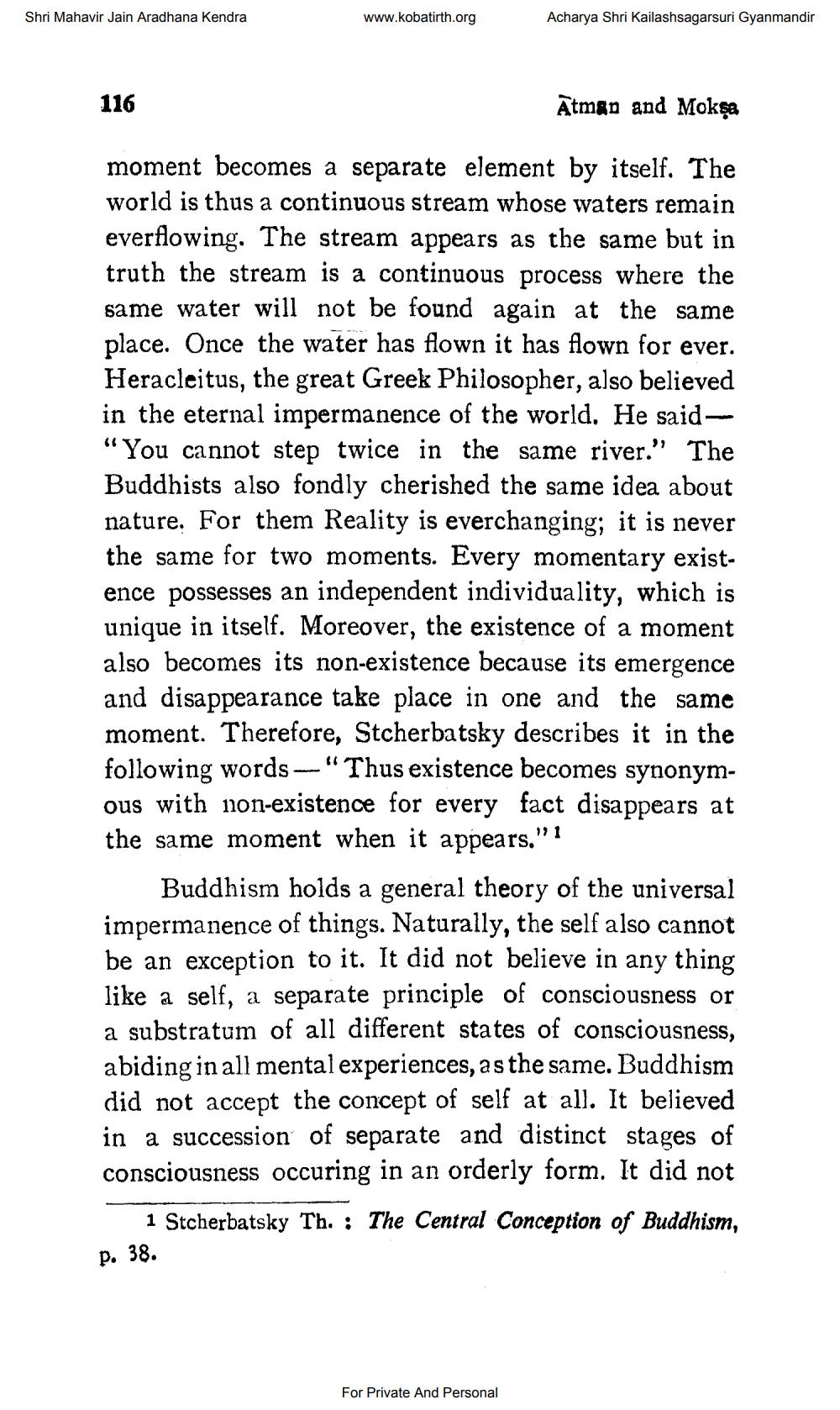________________
Shri Mahavir Jain Aradhana Kendra
www.kobatirth.org
Acharya Shri Kailashsagarsuri Gyanmandir
116
Atman and Mokẹo
moment becomes a separate element by itself. The world is thus a continuous stream whose waters remain everflowing. The stream appears as the same but in truth the stream is a continuous process where the same water will not be found again at the same place. Once the water has flown it has flown for ever. Heracleitus, the great Greek Philosopher, also believed in the eternal impermanence of the world. He said "You cannot step twice in the same river.” The Buddhists also fondly cherished the same idea about nature. For them Reality is everchanging; it is never the same for two moments. Every momentary existence possesses an independent individuality, which is unique in itself. Moreover, the existence of a moment also becomes its non-existence because its emergence and disappearance take place in one and the same moment. Therefore, Stcherbatsky describes it in the following words --"Thus existence becomes synonymous with non-existence for every fact disappears at the same moment when it appears." I
Buddhism holds a general theory of the universal impermanence of things. Naturally, the self also cannot be an exception to it. It did not believe in any thing like a self, a separate principle of consciousness or a substratum of all different states of consciousness, abiding in all mental experiences, as the same. Buddhism did not accept the concept of self at all. It believed in a succession of separate and distinct stages of consciousness occuring in an orderly form. It did not
1 Stcherbatsky Th. : The Central Conception of Buddhism,
p. 38.
For Private And Personal




